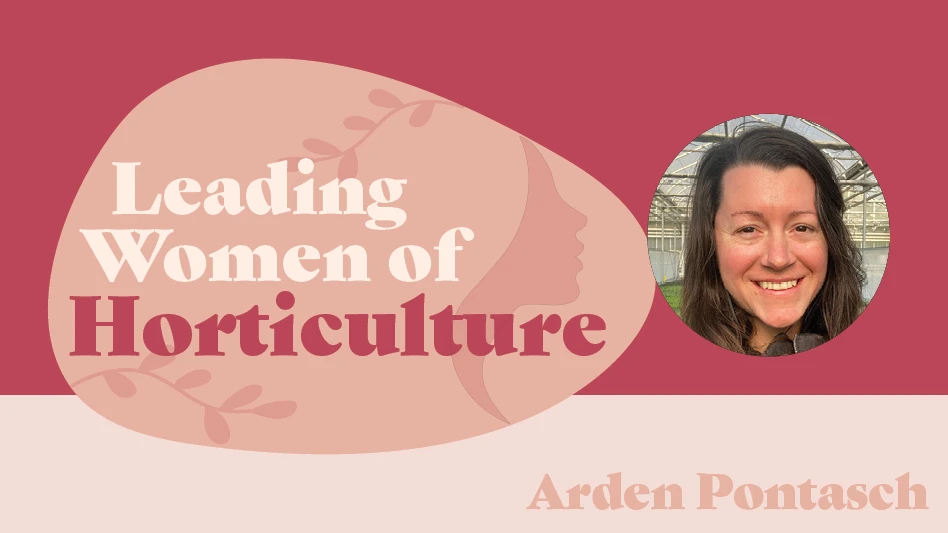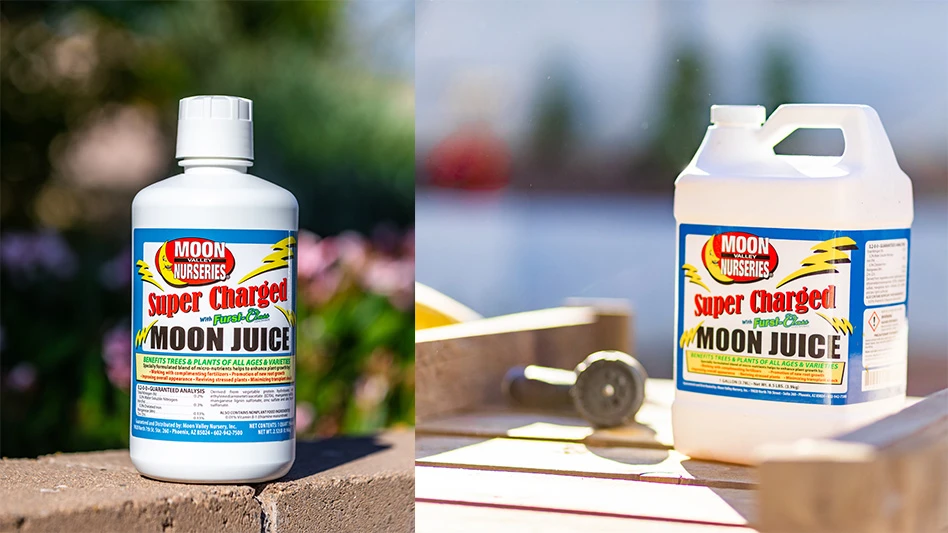
Costs always seem to go in one direction: up. Labor is expensive. Time is money, as the old saying goes.
With the minimum wage going up across many parts of the country, growers need to find a solution to potentially spiraling costs.
And fast.
The solution, as more and more people are realizing, is mechanization and automation. To quote another adage: work smarter, not harder.
The place to start to plan is not with the greenhouse, machinery or vehicles: it is with the least mechanical and seemingly least complex part of the whole setup; the propagation tray or container.
Why start at the container?
The reason to start with the tray is that it is involved from start to finish in every single cycle in the nursery. Seeders are used for one process. Forklifts can be used for a couple of processes. Transplanters can be used once or twice. The tray, however, is there and present from the minute the seed or cutting enters the media until the plant is bumped up or sold. If you get the tray right – i.e. compatible with the most types of machinery and good at supporting and nurturing the plant, this gives you a lot of flexibility and scope for improvement when designing how your nursery works.
The problem with mechanization and automation is that not all containers are created equal: some can even create more problems than they solve. Some are too weak and flimsy and would get destroyed or damaged by machinery, plants don’t pull well from others and get destroyed by heavy-handed robots. Others have irregular shaped cells or offset patterns that makes standardizing machinery and processes mostly impossible.
Choosing a sturdy, long-life and versatile tray will save a very large amount of money and time – both in set up and in use.
Choosing the right container
With a clever tray design, huge parts of the nursery can be automated to either reduce labor costs or to improve efficiency of current operations. The key concept of automation is to bring the work to the labor, rather than the current way of working which is to take people out into the field or greenhouse to do their work. The next few paragraphs will explain why this is not only beneficial to your business and workforce, but essential moving forwards.
The following can easily be applied to any fruit, nut, landscape or ornamental tree and shrub propagation nursery.

Photo: Ellepot, removed from sleeve
The container that will be used in this example is an 8-cell sleeve and tray system using inserts such as an Ellepot. The inserts sit in a sleeve, which in turn sits in a tray. This allows plants to be sorted and graded easily, but also allows multiple plants to be handled at once.
It is worth mentioning at this juncture that even if no further changes are made to a set-up, simply being able to move 8 plants at once around the nursery in a sturdy tray without compromising plant quality (indeed, most likely with better plant quality) is much better than struggling with individual flimsy pots or a tray that can’t keep its shape. An additional benefit of using an insert like an Ellepot is that you don’t have to wait for root development in order to lift and sort plants, as the media is held together nicely.
Automation – every step of the way
Filling and seeding
Outer ribs, indentations or cut-outs and a slightly heavier injection molded container mean they can be automatically de-stacked and built into a set by robots. Unfortunately, if de-stacking and building the sets is done by hand, this process could take longer as 8 sleeves need to be placed into a tray. If this is the only major manual process, the benefits to plant quality and mechanization later easily outweigh this extra work.
Ellepots are produced and then automatically or semi-automatically placed into the sleeves.
This can then go in a couple of different directions:
1) A seed or cutting is placed into the media
2) The containers then go down the conveyor belt and get a hole drilled in the top automatically. Moving down again, a smaller Ellepot containing an established liner is slotted into the hole created by the drill.
Further along the conveyor they get thoroughly watered and then move onto the dispatch area ready to be taken out of the head house and into the growing area.
Additionally, trays can be barcoded or tagged in some way for inventory management.
If fully automated (and depending on the size of the operation), this whole process can take as few as two or three people to keep an eye on the machinery and to ensure it has all the raw materials and containers it needs.
Moving to the growing area
Once filled, trays can be automatically or semi-automatically arranged at the end of the seeding line conveyor into 4 x 4 grids – 16 trays all in all, or 128 plants all together. If there is plenty of space to work and you have a decent enough forklift or buggy, there is no reason for this not to be 5 x 4 or even 6 x 4 trays all handled at once.
A specially adapted forklift or buggy comes in and slides forks under the legs of the trays. The trays are lifted up and taken out of the head house to the growing area and laid in neat, identical rows. No benching is required as the trays all have feet to lift them off the ground. If further spacing is required (especially if the plant has been bumped up already), a special fork set up that uses a chain system can space the trays out individually to a specific distance. This allows 100+ plants to be moved at once and no one has to bend their back, there’s no RSI and it’s a much more enjoyable job all around.
Sorting and Grading
When the time comes to sort through the plants for grading, trimming or transplanting, a forklift (or a fleet of forklifts for those with bigger operations) drives into and picks up 16-20 trays at once. The driver returns them back to the headhouse and trays get put onto a conveyor belt.
Plants can then be graded automatically, semi-automatically or fully manually. The automatic graders can cost quite a bit, so you need to weigh up the potential saving for your specific operation. If people are involved in this stage, they are in a comfy position out of the sun with no bending over. Backs are saved and the risk of injury is vastly reduced. There’s no trolleys to fall over and all tools and work instructions are at hand. Staff members are much easier to manage as they are all in one place - and if they have questions or issues a supervisor can be on hand right away.
That’s all great for a swift and efficient operation – but staff are also happier too. As we all know, happy, comfortable staff do a far, far better job and come back year after year – vastly reducing the cost and time of training new staff members.
Plants that are already at the right caliper and size and are ready to be sold get pulled out of the sleeve and tray and boxed up and shipped out. No plastic leaves the nursery - more on shipping later.
Those that need bumping up go to another production line, where they are transplanted into a bigger sleeve or even a loose-fill pot or container – again all this happens within the head house.
Those that need a bit more time out growing get put back into trays, which are then consolidated and sent back out in batches by the forklifts.
Shipping out
Once ready, plants can be very simply removed from their sleeve, Ellepot and all, and placed into either an inexpensive thermoformed pot or into a nice printed pot. A bit of gravel or woodchip is sprinkled over the top and the final result looks no different from any other retail pot – except inside the plastic is a stunning root system.
This process (depending on the container the plant leaves in) can be automated or left as a manual job, which ever fits the set up best. Whichever way you chose, chances are the labor will be better organized and work more efficiently.
Preparing for the next seeding
You might be preparing for the next cycle sooner than you think…
With efficiency savings throughout the nursery combined with advancements in media, fertilizer, growing environments and the added bonuses of a great tray and insert system, you can shave days, weeks and in some cases months off your turnaround times.
Sterilizing the trays for the next round is much simpler and quicker too. As soil doesn’t touch much of the tray, used trays and containers can be stacked onto pallets, forklifted into a steaming room and sterilized quickly and effectively without the use of chemicals or labor.
Extra benefits
Huge labor and time savings can be made through automation, just by starting with the right container - but there’s the horticultural aspect to think about too.
An air-pruning system such as the one detailed above creates a better and more natural root system. This is the result of better drainage and better aeration of the media, as well as the elimination of circling roots and the development of a larger quantity of younger, more vigorous roots. This means healthier and more beautiful plants, which in turn means happier customers. And this, most importantly means repeat business for your nursery.
If the tray is injection molded they are stronger than a blow molded or thermoformed tray or container, meaning they can last for years. Only having to buy a few trays a year to replace the odd one that got dropped or mistreated means a big reduction in average yearly costs. Well-designed injection molded trays also save on water and fertilizer too.
Sterilizing issues are also vastly reduced. If you plant your own propagated plants, no plastic goes to the field and back again, reducing the chances of disease making its way back to the nursery.
Summary
Horticulture is like every other industry across the world – time marches ever on and costs are forever increasing.
Across the U.S. skilled and unskilled labor is getting more expensive and harder to come by.
Think nursery wide systems, rather than focusing on trying to improve each step individually in isolation. Start with the one thing that affects as many stages as possible – often this will be the propagation tray or container.
The last point and a word of caution: do not let an increase in initial capital expenses put you off making your operation efficient and cost effective. Let’s be honest here: machinery does cost money and better quality trays are more expensive. Chances are, though, the return on investment will only be a year or two and after that you will be in a stronger, future-proof net cash-positive situation. Both machinery and injection molded trays can be financed too – meaning your return on investment is even quicker.
Latest from Nursery Management
- Plant breeding as an art
- Society of American Florists accepting entries for 2025 Marketer of the Year Contest
- Sustainabloom launches Wholesale Nickel Program to support floriculture sustainability
- American Horticultural Society welcomes five new board members
- Get to know Christopher Brown Jr. of Lancaster Farms
- American Floral Endowment establishes Demaree Family Floriculture Advancement Fund
- The Growth Industry Episode 3: Across the Pond with Neville Stein
- The Growth Industry Episode 2: Emily Showalter on how Willoway Nurseries transformed its business





